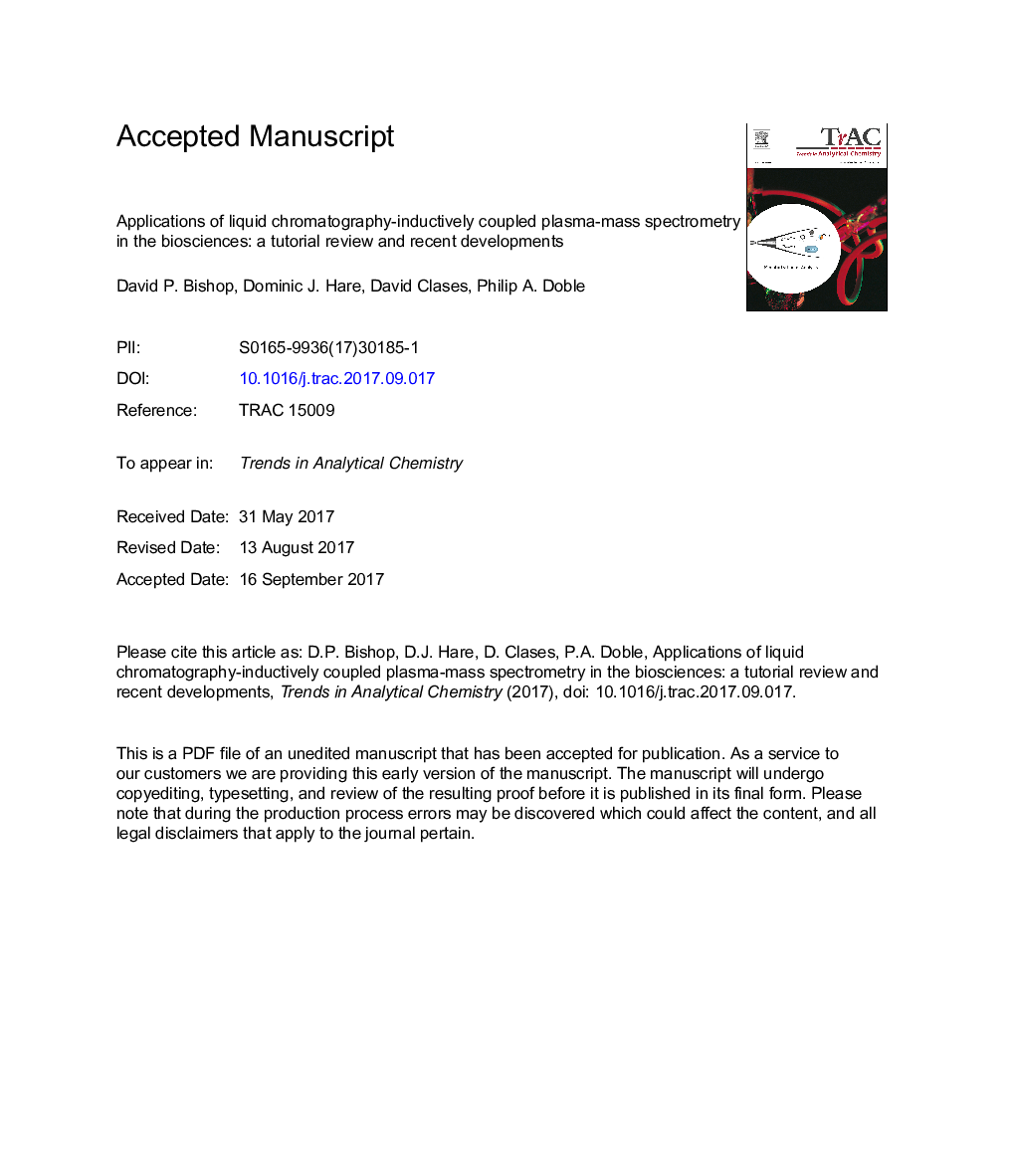| Article ID | Journal | Published Year | Pages | File Type |
|---|---|---|---|---|
| 7687570 | TrAC Trends in Analytical Chemistry | 2018 | 33 Pages |
Abstract
The biological function of minor and trace elements is ordinarily determined by their association with specific proteins, peptides and other biomolecules. Therefore, measuring the total elemental content of a biological sample provides limited information, particularly when a specific effect is due to an individual metal-protein complex. Speciation of metalloproteins, heteroatom-containing molecules or other compounds tagged with an exogenous metal can be used to overcome this limitation. A range of chromatographic separation techniques with on-line elemental detection using inductively coupled plasma-mass spectrometry (ICP-MS) have been applied to the biosciences, and each technique has intrinsic features that must be considered when designing speciation experiments. This tutorial review provides an overview of speciation in the biosciences, highlighting the unique abilities and limitations encountered. A selection of recent technical advances and new applications, the challenges of sample preparation and implementation of new technical developments are discussed, as well as the future directions of technology that is rapidly gaining a foothold in the contemporary biochemistry laboratory.
Related Topics
Physical Sciences and Engineering
Chemistry
Analytical Chemistry
Authors
David P. Bishop, Dominic J. Hare, David Clases, Philip A. Doble,
